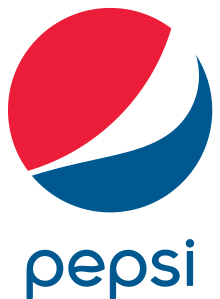Word-figurative mark
A word-image mark (more rarely also called a picture-word mark ) is a permanent combination between textual and graphic elements in a representation.
definition
The term word-image-mark is explained by the combination of text ( word ) and graphic ( image ). This distinguishes it from brands that consist of pure text ( word mark ) or pure graphics ( figurative mark ). It is legally regulated by § 8 MarkenV i. V. m. Section 7 MarkenV defines.
The basic rule is that the brand must not be able to be represented with a standard typewriter , otherwise it is considered a word mark. A graphic for the text is not absolutely necessary as long as the font itself has graphic characteristics (e.g. special font ).
If text is temporarily added to a figurative mark (e.g. as part of campaigns, anniversaries ), there is no word- figurative mark . Only when word and image are regularly used together or are defined as belonging together by the corporate design , one speaks of a word-image mark.
Trademark law
In terms of trademark law , a word-image trademark is a sign that has both a sequence of letters and graphic design elements.
In contrast to the pure word mark, terms can also be protected under trademark law in this way which, as pure word marks , are not accessible to trademark protection due to a lack of distinctive character or an interest in keeping them free - for example, descriptive terms. The resulting protection only extends to the entirety of the brand, i.e. H. on both components (word and picture).
The word-image trademark not only protects the combination of wording and graphics, but also the pure wording. The decisive factor is the overall impression, in which it can regularly be assumed from experience that the word component is the easiest way to name the word-image brand and thus characterize it.
The graphic (image) part is described with the Vienna classification .
Since the owner of a registered trademark is forced to use his trademark due to the obligation to use it, the deviations between the registered and the trademark used may only be insignificant.
Other types of brands
Web links
- Entry screen for trademark searches at the DPMAregister service of the German Patent and Trademark Office (DPMA).
